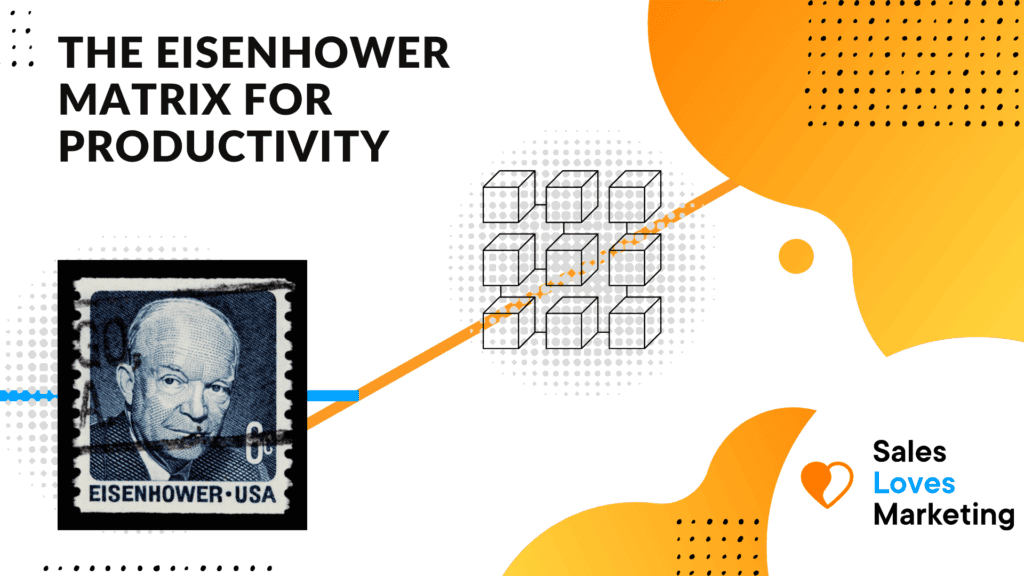In order to become more productive in your life and in your work it’s extremely important to be able to consistently prioritize your attention to urgent and important tasks first in order to make the rest of your days and weeks easier.
Understanding the fundamental difference between urgent and important tasks is the starting point to become more productive and having the discipline and the capacity to carry out urgent tasks first is a recipe for long term success. The Eisenhower Matrix aims to help you do that and so much more.
What is the Eisenhower Matrix?

The Eisenhower Matrix is a powerful tool for structuring and considering the long-term impact of your daily tasks and aligning your focus on what will make your day most effective at work, not just productive.
It aims to help you visualize your daily or weekly tasks in a matrix of urgent vs important tasks. Your day-to-day tasks along with your projects will be split into four main quadrants:
- High Urgency and Important Tasks/ Things to be completed immediately
- Low Urgency and Important Tasks/ Tasks and Projects to be scheduled
- Urgent But Not Important/ Things to Be Pushed to Someone Else
- Not Urgent and Not Important/ Tasks and Projects to be Eliminated
Recommended Reading: Productivity Apps to Help You Stay on Top of Your Game 2021 [Free and Paid]
Where did the Eisenhower Matrix Get its Name

Dwight D. Eisenhower was the 34th president of the United States from 1953-1961. Prior to Eisenhower becoming president he served as a general in the United States Army and as a leading commander in the Allied Forces Supreme during World War II.
He had to constantly make extremely difficult decisions about which tasks he should focus on throughout the day. This eventually led him to create the world-famous Eisenhower principle, which helps us to prioritize tasks by level of urgency and importance.
Actions to Take When Using the Eisenhower Matrix
The actions you should take when creating your own Eisenhower Matrix are broken down by the following four below. They will each go into their own separate quadrant based on it’s own importance and relevance.

Do it – Focus first on important tasks which need to be done that very day.
Schedule it – These are important tasks, but not immediately urgent which can be scheduled.
Delegate it – Urgent, but less important tasks which can be pushed to other people to handle.
Eliminate it – Tasks which waste your time and drain your productivity.
The Distinction Between Urgent and Important Tasks

In your day-to-day life and activities, the distinction between urgent/non-urgent, important/not important tasks may not always be 100% clear. As such, it is important to be aware of a few key distinctions between them that can help make your focus and time more effective throughout your day.
Recommended Reading: 7 Productivity Hacks for Busy Entrepreneurs
Urgent tasks are those that require immediate attention and action. These can include issues that need to be resolved promptly that can have an impact on the rest of your day and week if not taken care of immediately. They have clear consequences if you fail to act. Most times they are unavoidable and should not be procrastinated.
Important tasks are those which carry long-term impact on your life and goals. They require a long-term approach and extensive planning and scheduling coupled with action taking and preparation.
When you focus on important tasks and issues, you align your energy and attention towards what is important rather than simply doing stuff. Your daily actions add up to the long-term impact on your life and objectives. These are unique to you and only you.
Examples of Urgent and Important Tasks
- A client comes to you with a serious issue or problem
- Your car breaks down in the middle of highway traffic
- A colleague quits mid project
- The power is out in your building
- You have been presented with a lawsuit at work
These are tasks and circumstances which require you to act quickly and have immediate consequences if not taken care of quickly. Some of the time they are unexpected and will cause you to have to delay other tasks.
The Distinction Between Non-Urgent and Unimportant Tasks

Non-Urgent and Unimportant tasks are much easier to identify in your day-to-day routines. They may not require immediate attention, but they still do carry some weight to your long-term progression towards productivity and success.
Non-Urgent tasks are tasks that still carry relative importance to your long-term goals and productivity but do not require immediate action. They may not have a specific deadline or any sort of completion date but they do carry impact on your long-term growth and goals. These are also tasks that can be pushed over to someone else to handle.
Non-Important tasks are tasks which essentially suck up your time and are ones that you should focus on eliminating from your daily routine. These kinds of tasks decrease your overall productivity and can cause harm to your long-term growth and success.
Examples of Non-Urgent and Unimportant Tasks
- Binging Netflix Shows
- Scrolling through your social media feed
- Procrastinating difficult activities or things you don’t feel like doing
- Binge shopping
How to Use the Eisenhower Matrix to Manage Your Time [ToDoist]
A great resource to help you use the Eisenhower Matrix to manage your time and prioritize your tasks is Todoist. You can use ToDoist to organize your weekly tasks into four separate quadrants with different types of labels.

It allows you to directly create your matrix and assign urgent tasks with labels and it’s a great resource to help you put in practice some of the main principles of the Eisenhower Matrix.
